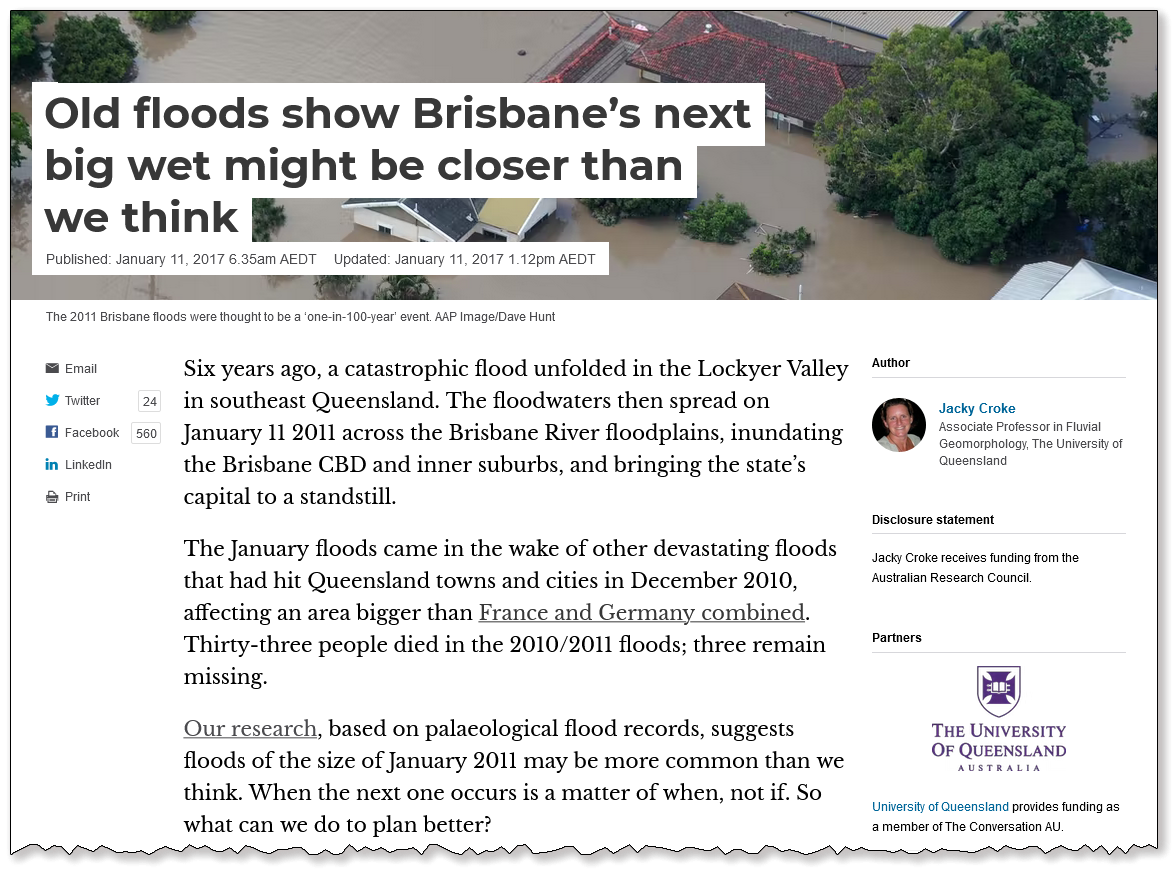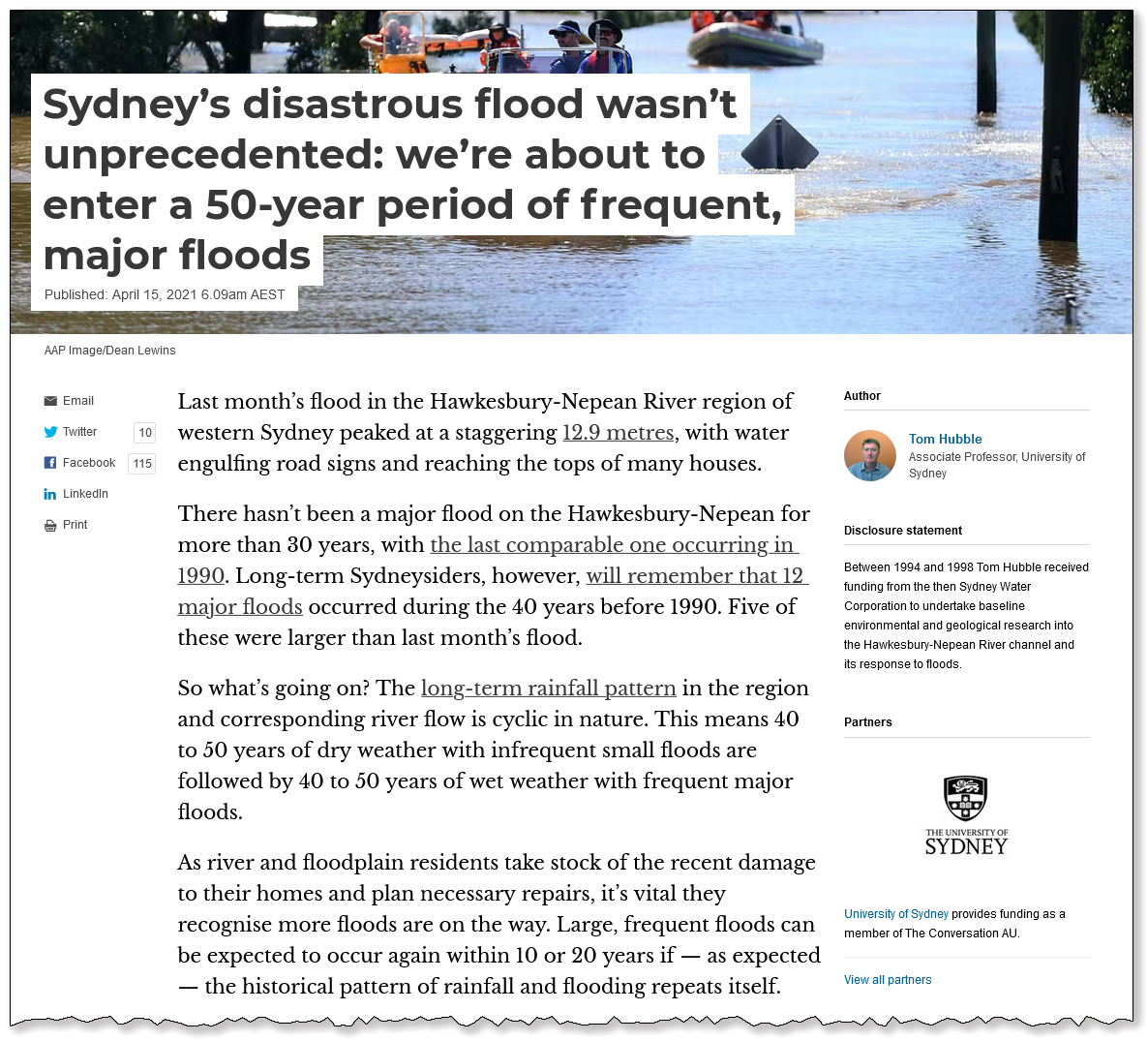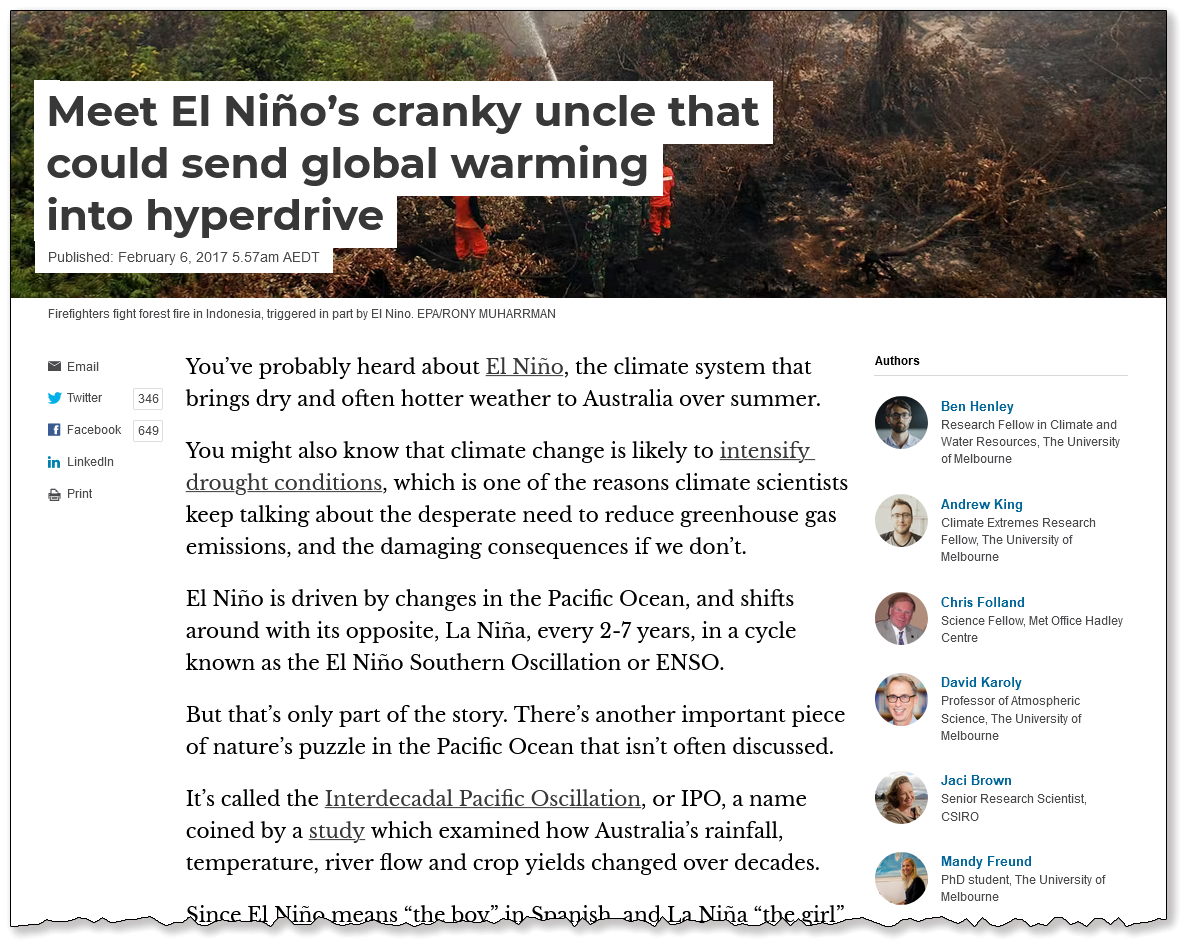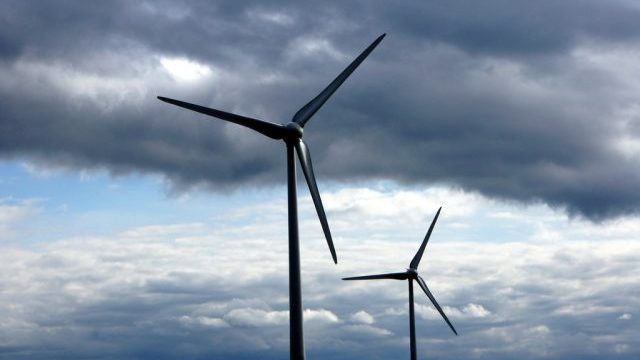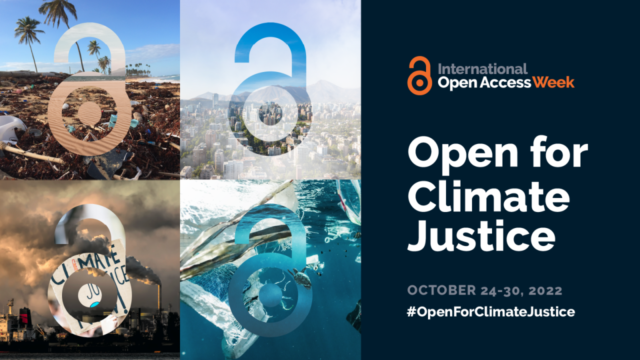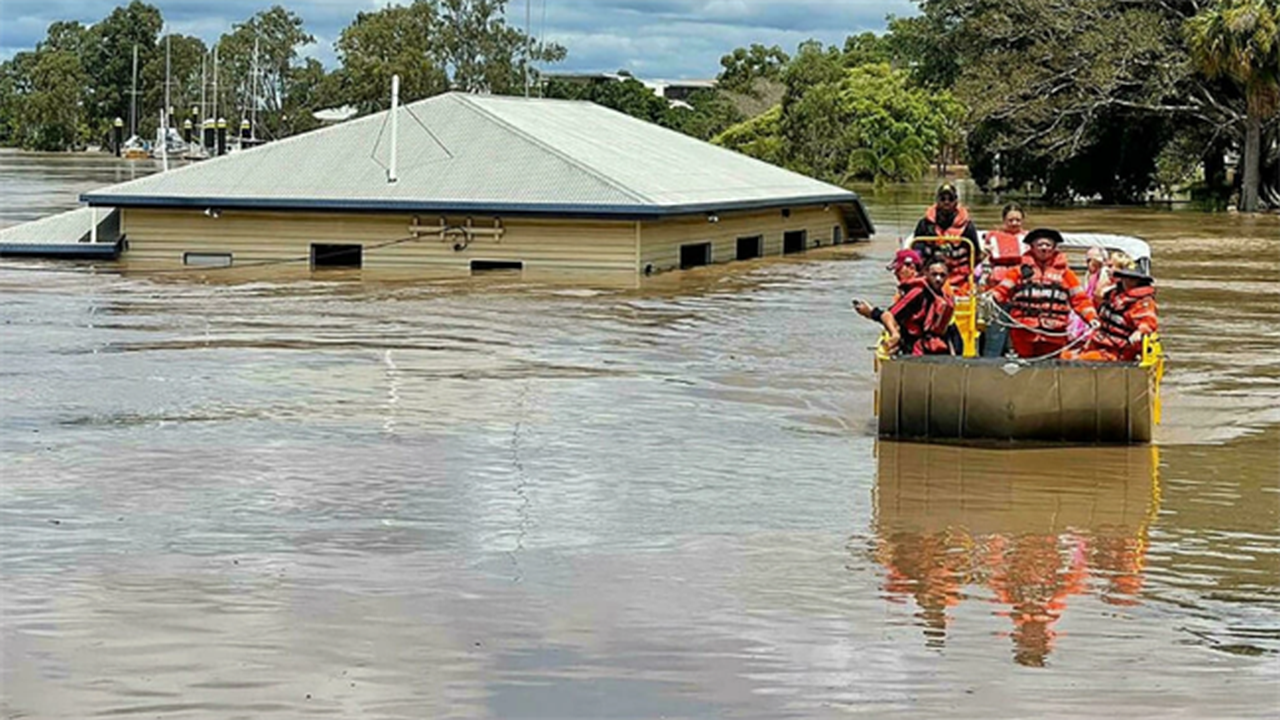
Climate knowledge ignorance has again seen communities “surprised” by expected floods
Two months ago, on 30 December 2021, I made the following statements in a RealKM Magazine climate knowledge article:
Based on … [my] knowledge [of the effect of climate variability on river flows], I wrote two blog posts highlighting how climate variability was a significant factor in two devastating extreme weather flood events in eastern Australia in 2011 and 2013 (please read those brief blog posts before continuing with this article). Additionally, a year ago, I also used this knowledge to accurately predict the high probability of a further significant flood event in eastern Australia, as outlined in my presentation to an International Society for Knowledge Organization (ISKO) Singapore Chapter forum in April (please view that brief presentation before continuing with this article).
My prediction was based on a strong La Niña and a notable negative trend in the Pacific Decadal Oscillation (PDO) after the PDO had been mostly positive or only slightly negative since early 2014. Right now, I’ll go even further to predict the high likelihood of devastating flood events in eastern Australia again this summer due to yet another strong La Niña and the PDO trending significantly negative (-3.15 in October 2021), as it did at the time of the 2011 and 2013 floods.
The Pacific Decadal Oscillation (PDO) trend that I was referring to is shown in the following section of graph from the United States National Oceanic and Atmospheric Administration (NOAA):

Unsurprising to me, my prediction of “the high likelihood of devastating flood events in eastern Australia again this summer” has again been accurate.
The flood devastated areas include Brisbane and Grantham, which were a focus of my two blog posts on the 2011 and 2013 floods referenced above:
The flood devastated areas also include Sydney, which was a focus of my April 2021 ISKO Singapore Chapter forum presentation referenced above:
Climate variability knowledge ignorance
Disbelief in regard to these new 2022 floods is being expressed across the mainstream and social media, with words such as “surprise” and “unprecedented” being used.
However, as I discuss in the information linked from my December 2021 article quoted above, eastern Australia has a highly variable climate, with that variability including extremes of wet and dry that contribute to devastating floods, bushfires, and droughts.
As discussed in a 2017 article in The Conversation, researchers had predicted that the next Brisbane River catchment flood of the size of 2011 was potentially much closer than many would have thought:
In their report1, the researchers state that:
Cyclical changes in climate which significantly influence or change the likelihood of floods are known to occur. These include variations in ENSO and La Nina events and the Interdecadal Pacific Oscillation (IPO) which modulates ENSO. La Nina events occurring during negative IPO phases have significantly higher likelihood of above average rainfall and flood events.
This aligns directly with what I state in regard to La Niña and the PDO in the second paragraph of my quoted statements above. The Pacific Decadal Oscillation (PDO) and Interdecadal Pacific Oscillation (IPO) are essentially the same interdecadal variability2, with the PDO traditionally defined within the North Pacific while the IPO covers the whole Pacific basin..
As I referenced in a 2020 RealKM Magazine bushfire crisis article, numerous published research papers support a correlation between the PDO / IPO and the climate of southeastern Australia.
As I also referenced in my 2020 bushfire crisis article and previously in my 2013 blog post, research further shows that decadal climate cycles contribute to what has been identified as “Flood-Dominated Regimes” (FDRs) and “Drought-Dominated Regimes” (DDRs) in southeastern Australia. For example, for the Shoalhaven River3, located south of Sydney:
South-eastern Australia experiences marked climatic cycles of wetter-than-average conditions (these are called Flood-Dominated Regimes, or FDRs) and drier-than-average conditions (these are called Drought-Dominated Regimes, or DDRs). FDRs and DDRs can last from 30 to 50 years. Historical records of flows in the Shoalhaven River can be examined to identify FDR and DDR periods … 1900-1948 was a drier-than-average period (or DDR) in the Shoalhaven catchment; 1949-1990 was a wetter-than-average period (or FDR), and the period from 1991 to the present [2006] is another DDR.

As stated in an article in The Conversation after Sydney’s 2021 floods, we are very likely at the beginning of the next Flood-Dominated Regime (FDR). This means that, far from being a “surprise” or “unprecedented,” the current floods are, as I warned two months ago in my quoted statements above, very much expected. More similarly devastating floods can be expected to frequently occur in the decades ahead:
Climate change knowledge ignorance
If that isn’t concerning enough, the outlook ahead is actually potentially much worse than just 30 to 50 years of frequent major floods in a Flood-Dominated Regime (FDR).
As I discuss in both my 2020 bushfire crisis article and December 2021 climate knowledge article, climate variability and climate change are interacting to create the situation where climate change is “supercharging” the extreme weather events that occur naturally through climate variability.
In regard to the Pacific Decadal Oscillation (PDO) / Interdecadal Pacific Oscillation (IPO), which was the basis of my December 2021 flood prediction quoted above, researchers have issued the following warning in The Conversation about the compounding impacts of climate variability and climate change:
Moving to a better knowledge-based approach
From the evidence presented in this article, it is clear that climate variability knowledge ignorance has created the situation where communities in eastern Australia have been surprised by devastating floods that were in reality expected. On top of this, climate change knowledge ignorance means that these communities are currently similarly unprepared for the likelihood of this known flood risk to worsen into the future.
We need to move from the current situation of climate variability and climate change knowledge ignorance to a better knowledge-based approach to flood risk management. This needs to include:
- respecting and using climate science
- ending Australia’s censorship of environmental information4
- ending development in flood prone areas
- moving existing settlements to higher ground.
Header image source: “Australia tells tens of thousands to flee floods,” Iran Daily, CC BY 4.0.
References:
- Big Flood Project. (2016). The Big Flood: Will it Happen Again? Final Report, Australian Research Council (ARC) Linkage Project ARC LP 120200093 2013-2016). ↩
- Dong, B., & Dai, A. (2015). The influence of the interdecadal Pacific oscillation on temperature and precipitation over the globe. Climate dynamics, 45(9-10), 2667-2681. ↩
- Boyes, B. (2006). Determining and managing environmental flows for the Shoalhaven River, Report 2 – Environmental Flows Investigations. NSW Department of Natural Resources, August 2006, p. 22. ↩
- Driscoll, D. A., Garrard, G. E., Kusmanoff, A. M., Dovers, S., Maron, M., Preece, N., … & Ritchie, E. G. (2021). Consequences of information suppression in ecological and conservation sciences. Conservation Letters, 14(1), e12757. ↩
Also published on Medium.

